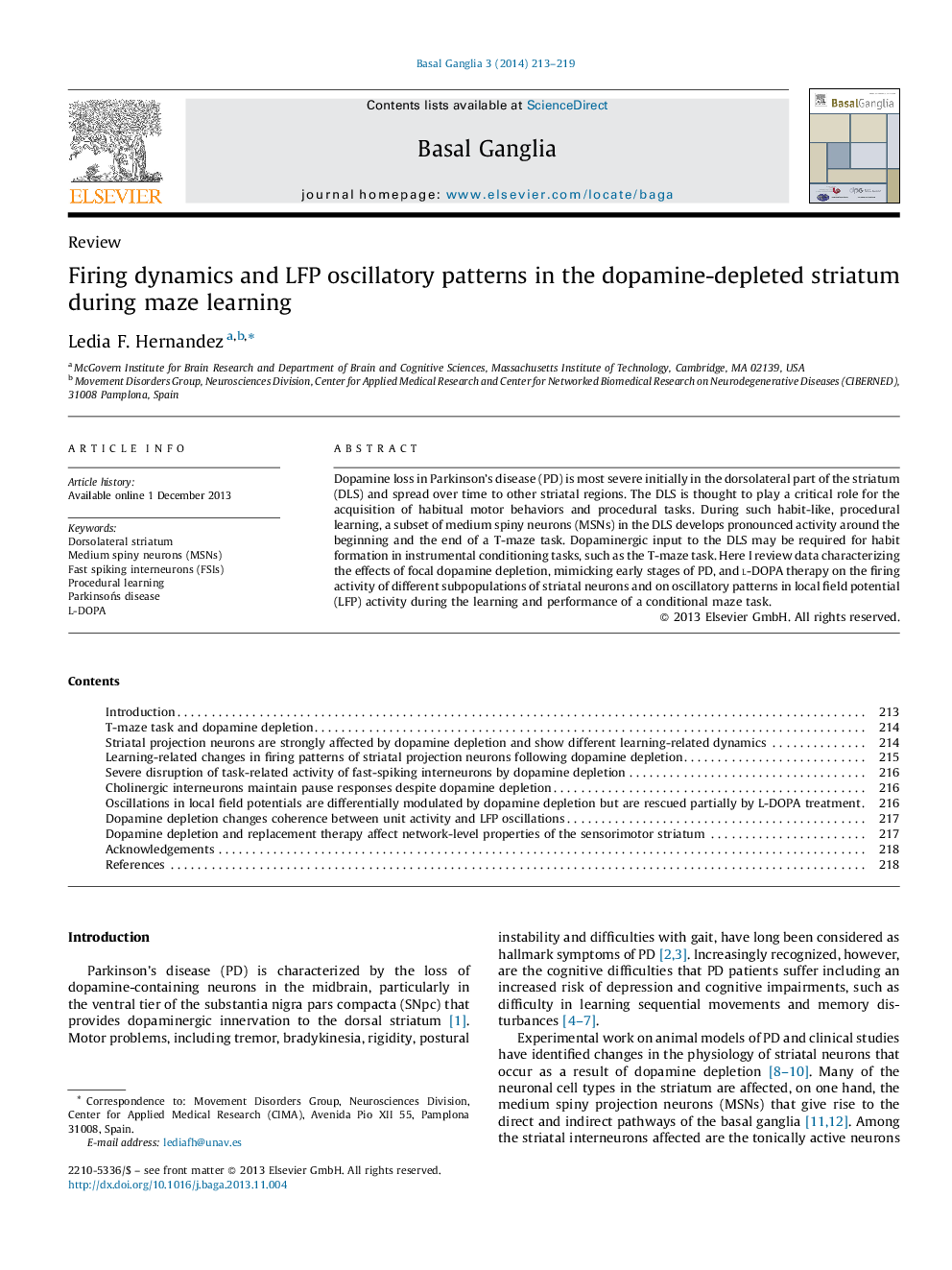| Article ID | Journal | Published Year | Pages | File Type |
|---|---|---|---|---|
| 3036131 | Basal Ganglia | 2014 | 7 Pages |
Abstract
Dopamine loss in Parkinson's disease (PD) is most severe initially in the dorsolateral part of the striatum (DLS) and spread over time to other striatal regions. The DLS is thought to play a critical role for the acquisition of habitual motor behaviors and procedural tasks. During such habit-like, procedural learning, a subset of medium spiny neurons (MSNs) in the DLS develops pronounced activity around the beginning and the end of a T-maze task. Dopaminergic input to the DLS may be required for habit formation in instrumental conditioning tasks, such as the T-maze task. Here I review data characterizing the effects of focal dopamine depletion, mimicking early stages of PD, and l-DOPA therapy on the firing activity of different subpopulations of striatal neurons and on oscillatory patterns in local field potential (LFP) activity during the learning and performance of a conditional maze task.
Related Topics
Life Sciences
Neuroscience
Neurology
Authors
Ledia F. Hernandez,
